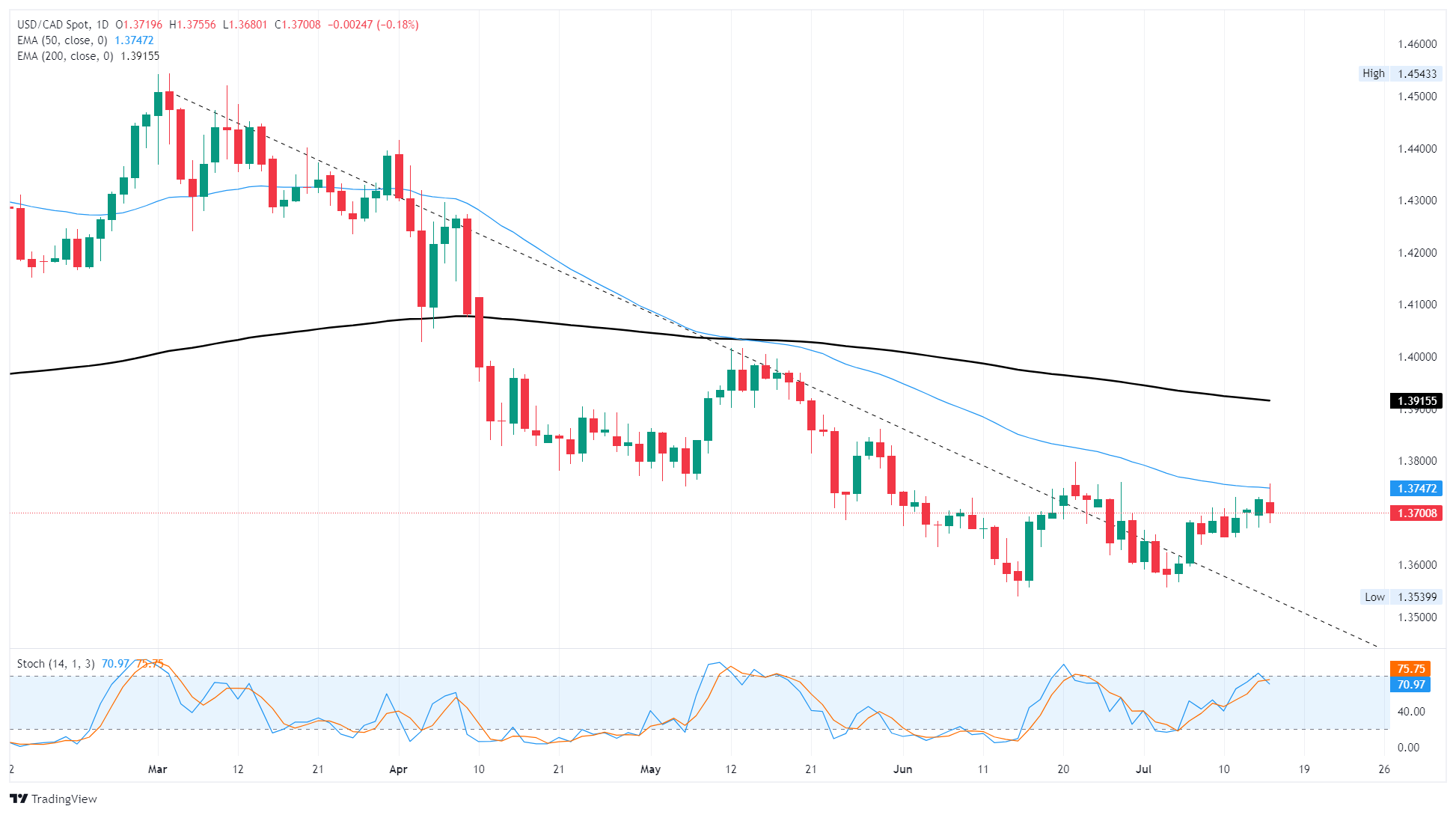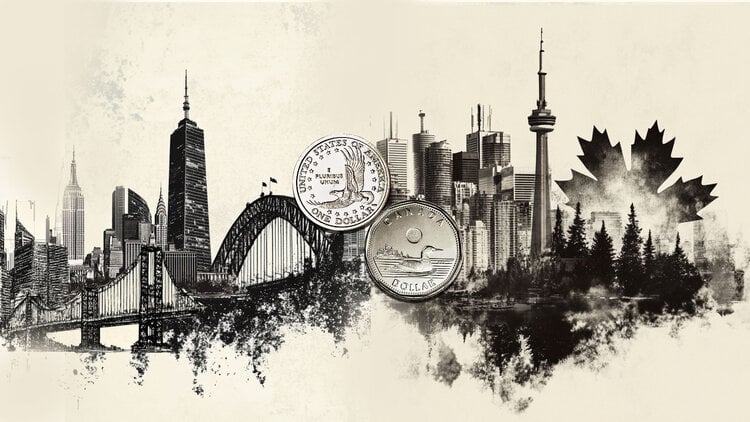- The Canadian Dollar whipsawed on Wednesday, finding fresh gains on US Dollar woes.
- Canadian economic data remains limited after this week’s inflation update.
- Trump is signaling his intent to terminate Powell as the Fed chair, but he needs Congress’ help to do it.
The Canadian Dollar (CAD) whipsawed on Wednesday, tossed around tumultuous sentiment seas as the US Dollar (USD) grapples with ongoing political volatility from the Trump administration. Cooler-than-expected United States (US) Producer Price Index (PPI) inflation data sparked some positive investor risk appetite, but the mood quickly soured as President Donald Trump steps up his attacks on Federal Reserve (Fed) Chair Jerome Powell.
Daily digest market movers: Canadian Dollar catches fresh bids from Greenback weakness
- The Canadian Dollar caught a slight lfit against the Greenback following a volatile start.
- 1.3700 still remains a key technical barrier on the USD/CAD chart.
- US PPI inflation eased more than expected in June, falling to 2.6% from 3.0%.
- US President Donald Trump continues his campaign against Fed Chair Powell, and is looking to recruit Congressional Republicans to allow him to circumvent clear legal barriers.
- With the Fed’s political autonomy now in question, volatility is sharply on the rise and risk aversion is beginning to cook.
Canadian Dollar price forecast
The Canadian Dollar shrugged off early losses on Wednesday, pushing the USD/CAD pair back down into the 1.3700 handle. The pair continues to struggle with decisive moves in either direction, and a technical downside rejection from the 50-day Exponential Moving Average (EMA) near 1.3750 is forming on the daily candlesticks.
USD/CAD daily chart

Canadian Dollar FAQs
The key factors driving the Canadian Dollar (CAD) are the level of interest rates set by the Bank of Canada (BoC), the price of Oil, Canada’s largest export, the health of its economy, inflation and the Trade Balance, which is the difference between the value of Canada’s exports versus its imports. Other factors include market sentiment – whether investors are taking on more risky assets (risk-on) or seeking safe-havens (risk-off) – with risk-on being CAD-positive. As its largest trading partner, the health of the US economy is also a key factor influencing the Canadian Dollar.
The Bank of Canada (BoC) has a significant influence on the Canadian Dollar by setting the level of interest rates that banks can lend to one another. This influences the level of interest rates for everyone. The main goal of the BoC is to maintain inflation at 1-3% by adjusting interest rates up or down. Relatively higher interest rates tend to be positive for the CAD. The Bank of Canada can also use quantitative easing and tightening to influence credit conditions, with the former CAD-negative and the latter CAD-positive.
The price of Oil is a key factor impacting the value of the Canadian Dollar. Petroleum is Canada’s biggest export, so Oil price tends to have an immediate impact on the CAD value. Generally, if Oil price rises CAD also goes up, as aggregate demand for the currency increases. The opposite is the case if the price of Oil falls. Higher Oil prices also tend to result in a greater likelihood of a positive Trade Balance, which is also supportive of the CAD.
While inflation had always traditionally been thought of as a negative factor for a currency since it lowers the value of money, the opposite has actually been the case in modern times with the relaxation of cross-border capital controls. Higher inflation tends to lead central banks to put up interest rates which attracts more capital inflows from global investors seeking a lucrative place to keep their money. This increases demand for the local currency, which in Canada’s case is the Canadian Dollar.
Macroeconomic data releases gauge the health of the economy and can have an impact on the Canadian Dollar. Indicators such as GDP, Manufacturing and Services PMIs, employment, and consumer sentiment surveys can all influence the direction of the CAD. A strong economy is good for the Canadian Dollar. Not only does it attract more foreign investment but it may encourage the Bank of Canada to put up interest rates, leading to a stronger currency. If economic data is weak, however, the CAD is likely to fall.

